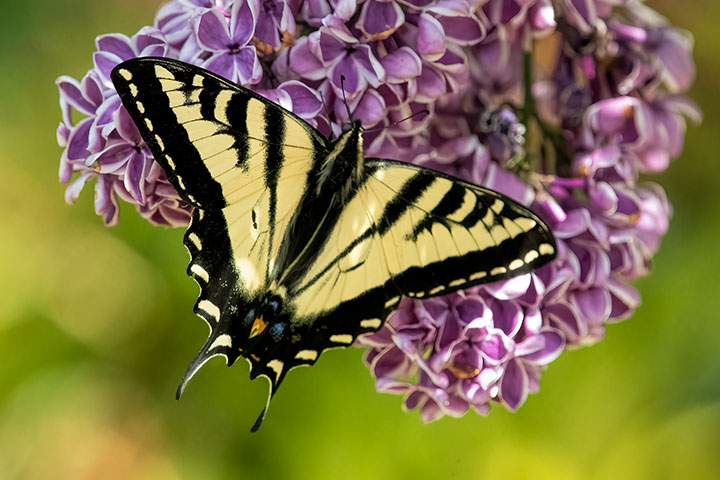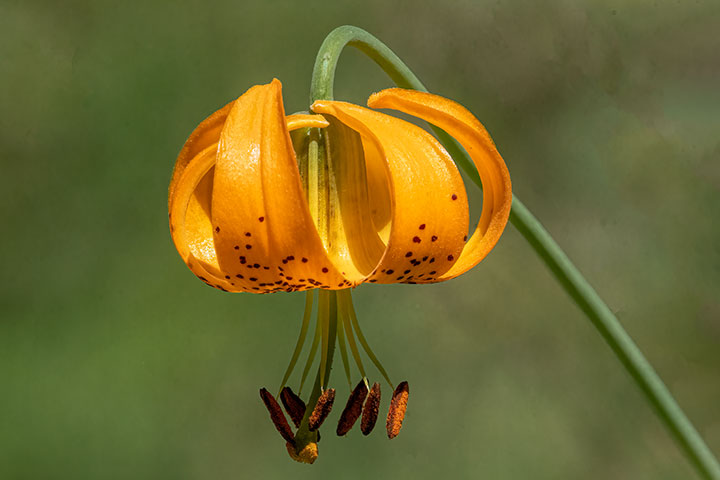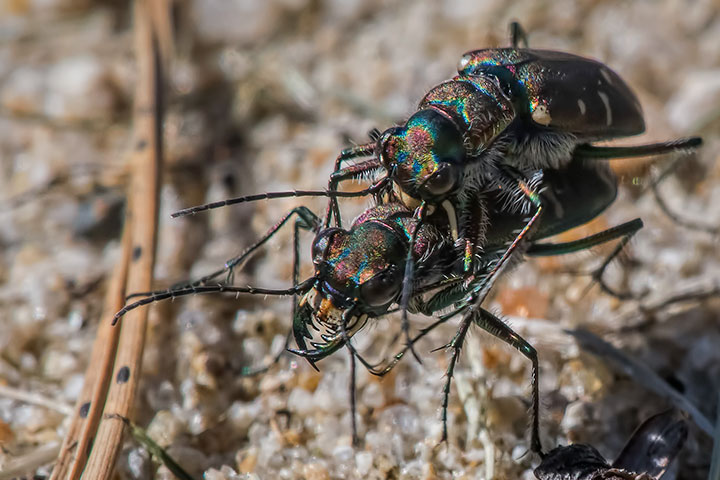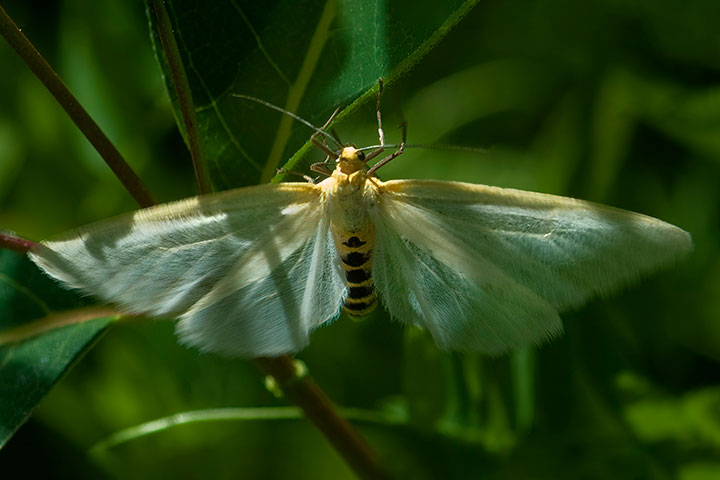Almost simultaneously, the tigers have arrived. They are: a tiger beetle, a tiger butterfly, and a tiger lily.
I have commented previously, somewhat whimsically, on our rather odd naming conventions for species: butter sipping (on butterflies and buttercups); horned birds and insects; siskins and catkins. But, naming local things after tigers has got be one of the oddest.
The tiger is the apex predator of an Asian cat family (felidae). It has orange fur with black stripes. So, why are local animals named after this distinctly alien species?
Our Canadian tiger swallowtail butterfly won’t have been named for its predator characteristics. Maybe it is those black stripes, but the butterfly’s base colour is yellow, not orange (oops!).

The tiger lily is orange, but alas, the black embellishments are spots, not stripes. Now, that is a rather sloppy bit of naming.

The tiger beetle is certainly named, not for its appearance, but its predation. I have watched them within the week, but this is an earlier shot of two tiger beetles mating. Of course, the question could be posed: Why name this predator after tigers, as opposed to grizzlies or cougars? The province has quite a number of beetle species that are styled as tiger beetles.

Then there are moths. BC has nearly a dozen species of moths that are styled as tigers. This is one of them, presumably named because of the black stripes (against yellow) on its abdomen.

So, we have a few dozen species of various sorts that are named for a large Asian cat. Hmm, there does seem to be a certain linguistic bankruptcy among taxonomists.

Alistair; As usual, your photos give a wonderful glimpse of the world. But this week I very much appreciate your phrase “a certain linguistic bankruptcy among taxonomists.” It sparked quite the conversation in my mind.
I have been depressed for days because I have seen not a single Turkish Cap along the roadside shoulders as I cycle, so I very much appreciate your picture of the lazy-named Tiger Lily at your nearest undisclosed location. How can we not continue to be haunted by the plea by Antonio to his wife the Duchess of Malfi just before they part forever, “Be a good mother to your little ones and save them from the tiger”?
Doug, that line was written about 1613, just about when the British began trading with India. However, I blame much of the linguistic usurpation of the tiger on the British colonial period, which began in India a century and a half later. We could dub it the Kipling effect. Yet, Antonio was correct: We now need to be saved from the overuse of the word, tiger. Tiger Balm, anyone?
I think Antonio is talking about man-eating tygers. I am embarrassed to admit that one of the first books I ever loved was an instruction manual by one Jim Corbett (a literary descendant of Kipling but not pausing perhaps long enough on Conrad) on killing these beasts that lurk in the forests of the night. This was a lifer for me:
THREE miles from our winter home, and in the heart of the forest, there is an open glade some four hundred yards long and half as wide, grassed with emerald-green and surrounded with big trees interlaced with cane creepers. It was in this glade, which for beauty has no equal, that I first saw the tiger who was known throughout the United Provinces as ‘The Bachelor of Powalgarh’,
Corbett,Jim. Man-Eaters Of Kumaon (Kindle Locations 1739-1741). Oxford University Press.
Alistair, I am wondering if you would have an explanation for the black and white colour phase of the Tiger swallowtails. Gender…age? I noticed both yellow/black and white/black individuals “puddling” on Next beach a few weekends ago.
Doug, I believe that you are referring to an entirely different species: the Pale Swallowtail.
I’m hoping to see a tiger moth…this season now…such a beauty…and next time I see a Monarch, will observe carefully to see if a tiger monarch!